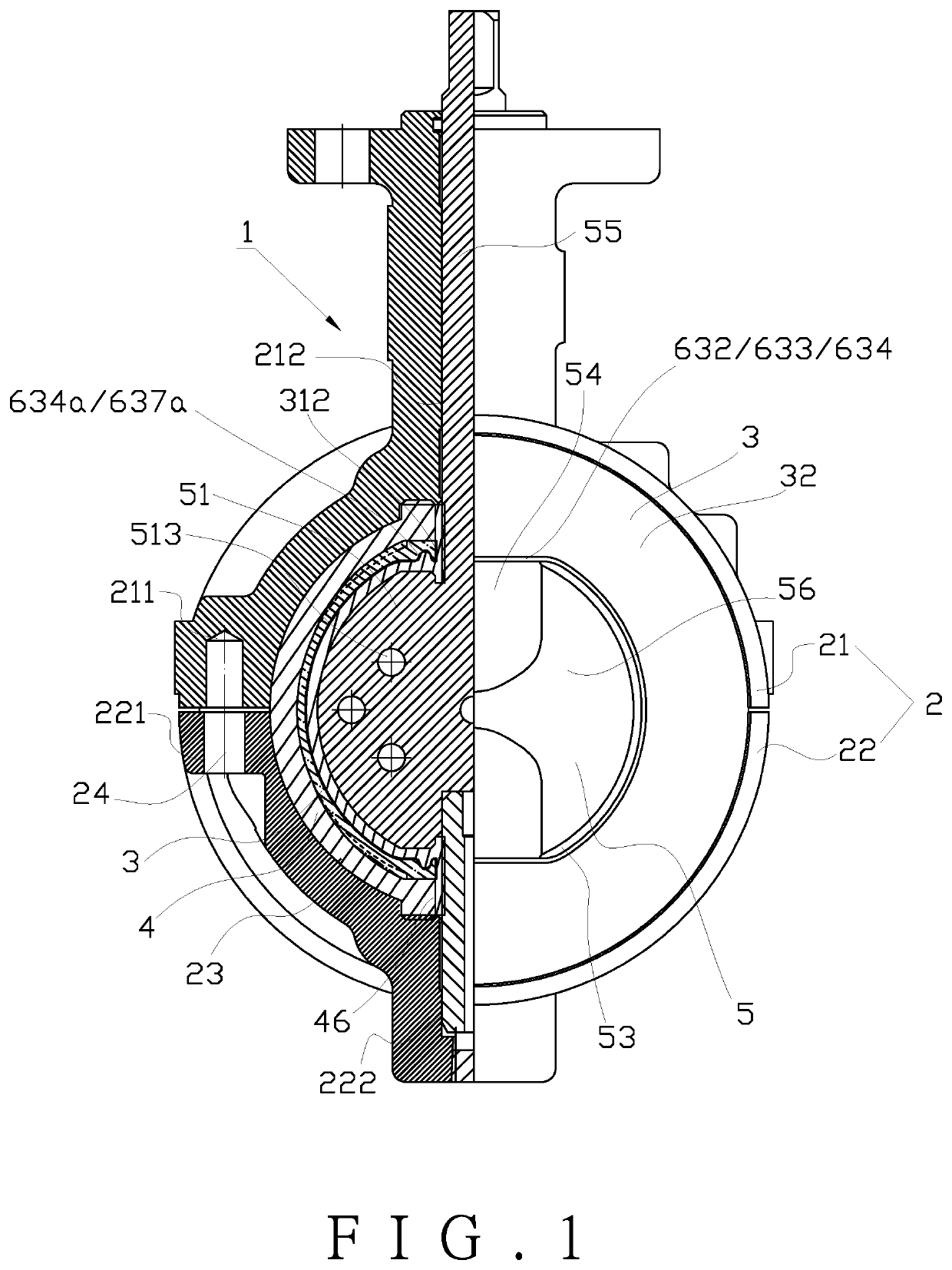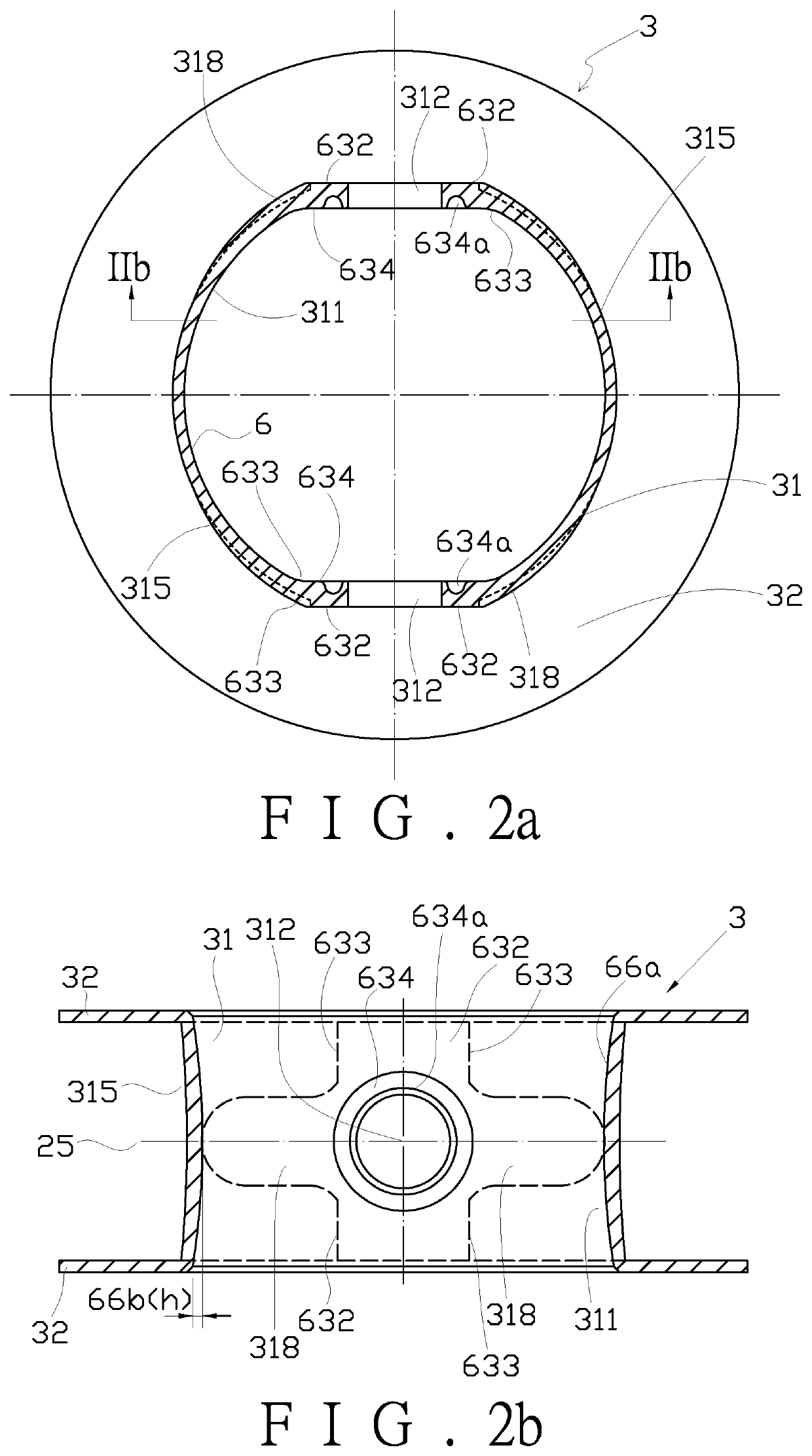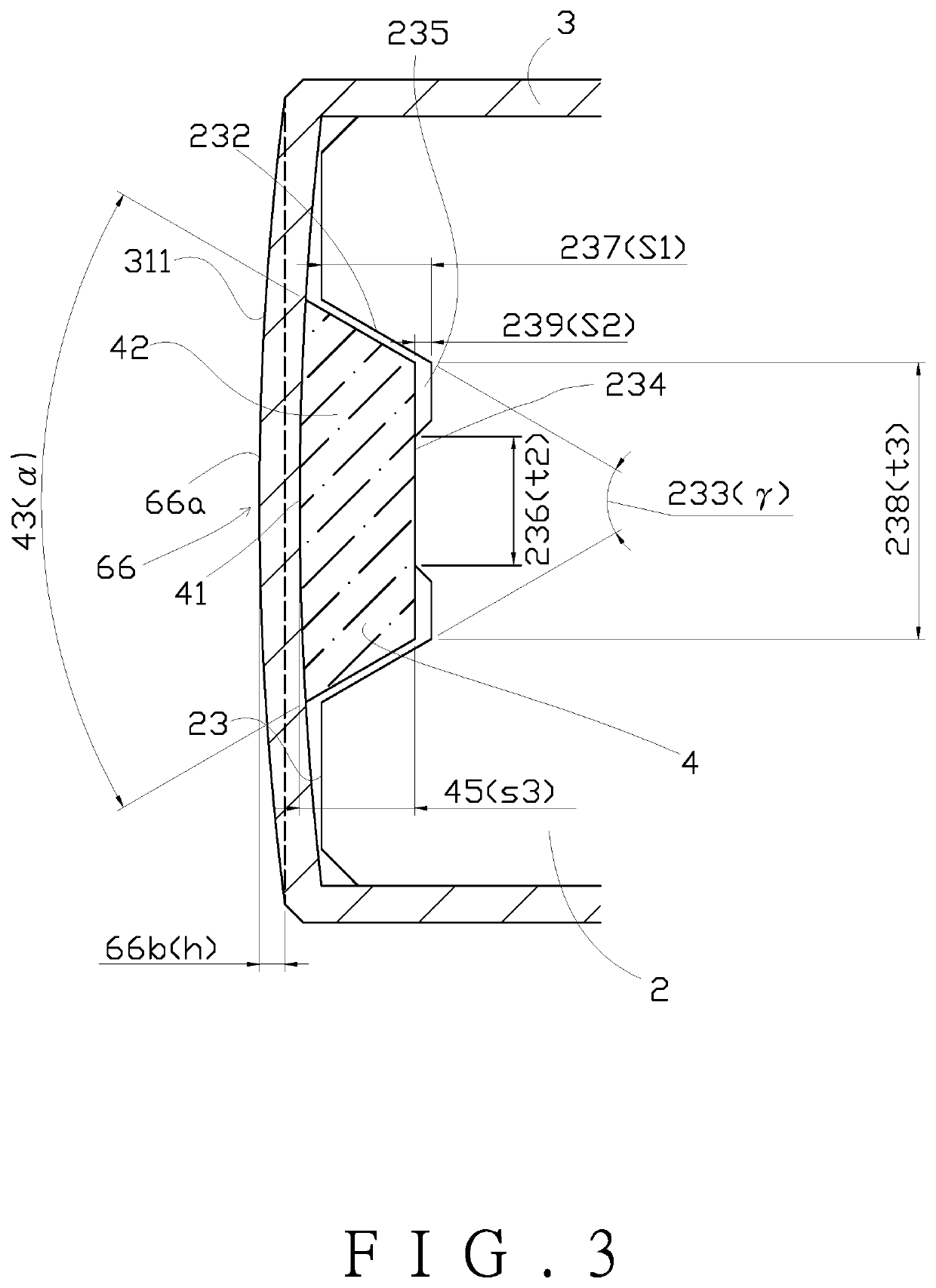If the butterfly disc 92 is not fully closed at a right position, there is a risk that the leakage related to static pressure may be incurred.
When the
contact angle 71(θ) of the ribbon sealing is larger, the sliding distance becomes longer, and more materials need to suffer the deformations and the risk of
creep.
These conditions incur the
creep easily, require
high torque and are unfavorable to the interference sliding 7 while rotating, in particular the service life of the butterfly valve is shortened at high temperatures.
The linear sealing 61 uses a smaller sealing width 63(B), a higher press pressure 64(P), and a larger packing amount 65(ε) to attain a sealing effect capable of resisting
high pressure, but the creep is easily incurred and is unfavorable to the
temperature resistance.
The portion along the line a-a is easily worn away and causes the creep, which increase the risk of leakage and reduce the service life of the butterfly valve.
The inner surface of the lining having the protuberant trapezoidal cross section and the groove has the sealing to the pressure over 400 psi, but a large amount of
material deformation is incurred and the demand for the torque and the service life cannot be fulfilled.
The volume of the material of the protuberant trapezoidal cross section of the tubular portion is too big to prevent the shrinkage after it is subjected to high temperatures.
The back-up ring cannot retain the strength of the structure at high temperatures, so the resistance to high temperatures is greatly decreased.
However, the material of the tubular portion has different thicknesses, the sealing surface uses a thin
material structure, and the back-up ring is not fixed by the groove of the valve body.
Because the descriptions are lacking, it is unable to determine whether the temperature at 400° F. and the long-term use of the structure with different thicknesses can fulfill the demand for the
pressure resistance and the service life.
The rectangular groove at the outer side of the tubular portion enlarges when the back-up ring expands or becomes deformed, so no support is added to the back-up ring and the strength of the ring cannot be retained.
However, the sealing width and the packing amount are still limited by the size of the O-ring.
No documentary reference can be used to support the effectiveness.
The rubber has high deformation amount and high elasticity but does not have the resistance to
corrosion and the resistance to high temperatures.
However, it is obvious that such
rubber material structure cannot be adapted to the fluoroplastic material.
If the fluoroplastic is used to make this mountain structure, the creep having the large amount of
material deformation in the small area cannot be taken.
This situation causes the encapsulation of the butterfly disc to be ineffective and leads to the infiltration of corrosive liquid.
Accordingly, the packing amount rises shapely and a high amount of deformation and large friction forces are generated.
The fluoroplastic cannot bear the large amount of material deformation in the small area and high friction forces.
The fluoroplastic-encapsulated butterfly disc and the fluoroplastic of the inner surface of the lining suffer high material deformation and the creep, and this situation causes the encapsulation of the butterfly disc to be ineffective and incurs the infiltration of the corrosive liquid.
The fluoroplastic lining needs to design additional shaft sealing surfaces and shaft hole surfaces because the extensive press causes the press surfaces of the fluoroplastic to experience the creep and have wear because of the friction, with the result that the leakage is incurred and the service life of the butterfly valve is reduced.
The inner surface of the lining is a mountain structure, and this structure reduces the area of the flow passage and results in the reduction in the performance of the butterfly valve.
The volume of the material of the fluoroplastic with the projecting trapezoidal cross section is too big, so the strength of the structure cannot be retained under high temperatures and the temperature resistance is greatly decreased.
When the butterfly disc encapsulated by fluoroplastic makes the linear sealing, the creep problem caused by the press sealing and resulting in the large amount of material deformation is not easily incurred.
The area of the flow passage occupied by the butterfly
disc protrusion and the radial connection is large, and this arrangement affects the performance.
However, the sealing performance of the linear sealing is decreased under high temperatures.
The creep problem caused by the press sealing and resulting in the large amount of material deformation is not easily incurred.
Further, the material only provides the less packing amount during the interference sliding operation with friction, which requires a
low demand for the torque.
The original spherical surface is retained, but the contact in the extensive area still has wear.
The smaller thickness results in the material deformation easily and causes the inner surface of the lining to shrink inwards easily at high temperatures.
The inward shrinkage of the recessed spherical surface at high temperatures affects the temperature resistance, but the expansion of the rubber of the back-up ring incurred by high temperatures also results in an outward protrusion of the recessed spherical surface, which however decreases the temperature resistance.
However, the structure cannot provide the resistance to
high pressure.
The friction is small and the demand for the torque is low.
The thin-layered fluoroplastic of the recessed spherical surface creases easily, becomes abraded and causes the infiltration of the corrosive liquid.
When the fluoroplastic lining is used, the width of the press surface is only 2.5 mm and this condition does not provide the resistance to high temperatures and high pressure.
If it is applied in the butterfly disc having the fluoroplastic encapsulation, the interference sliding results in the material deformation of the fluoroplastic encapsulation and the creep under a high packing amount.
Thus, the temperature resistance and the pressure resistance cannot be attained.
However, the width of the press surface is only 3 mm, so the pressure resistance and the temperature resistance cannot be provided.
Therefore, the current conventional approaches of the fluoroplastic lining butterfly valve cannot fulfill the specifications of the butterfly valve adapted to special purposes, shown as follows:
 Login to View More
Login to View More  Login to View More
Login to View More 


